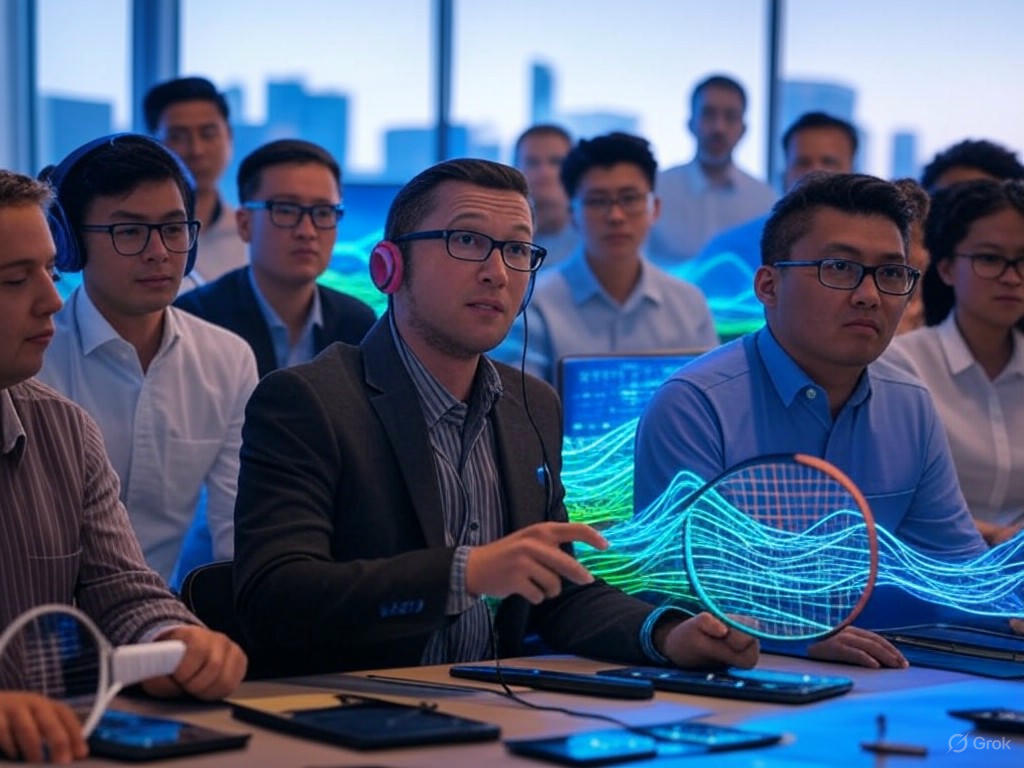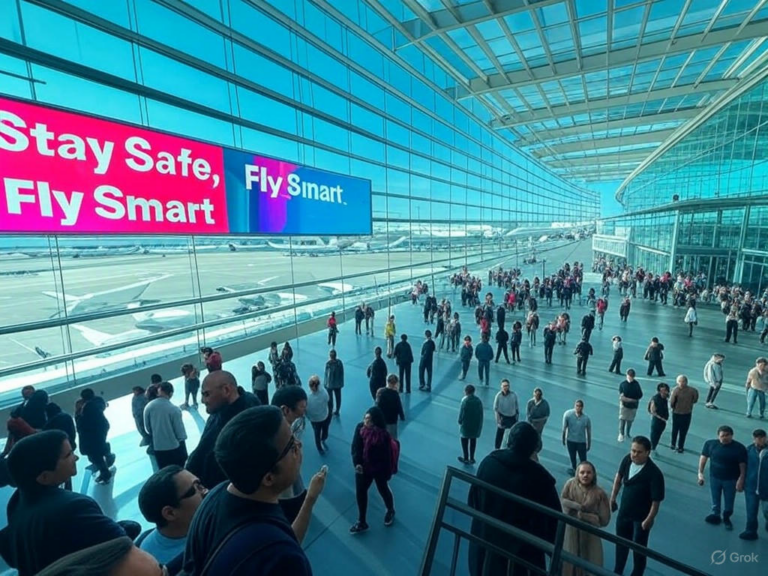
AI RSAC 2025: Insights from Social Media Roundup
RSAC 2025 and the Evolving AI Security Landscape
RSAC 2025 wrapped up with a buzz of excitement and caution, as cybersecurity experts from around the globe shared their thoughts on the event via social media. This year’s focus highlighted how AI is transforming defenses while introducing fresh risks. Have you ever wondered how cutting-edge technology like AI could be both a shield and a sword in the digital world?
Discussions centered on the need for balance in an era where AI agents are becoming mainstream. Attendees emphasized that innovative tools from companies like Microsoft and Google could streamline security workflows, but only if organizations approach them with careful planning. It’s fascinating to see how RSAC 2025 spotlighted these dual aspects, urging leaders to foster collaboration and adapt quickly to emerging threats.
The Surge of AI Agents in RSAC 2025 Conversations
One of the hottest topics at RSAC 2025 was the rise of AI agents, with social media buzzing about their potential to revolutionize cybersecurity operations. Experts like Yoav Regev from Sentra pointed out how these tools can automate routine tasks, boosting efficiency for security teams. But as Jeetu Patel from Cisco cautioned, this advancement brings a new wave of risks that demand proactive mitigation.
Think about it: Imagine an AI system handling threat detection on autopilot, freeing up human experts for more strategic work. Yet, the autonomy of these agents raises concerns about data handling and oversight. RSAC 2025 insights revealed that businesses must integrate AI thoughtfully to avoid amplifying issues like shadow data vulnerabilities.
Navigating the Autonomy Challenge in RSAC 2025
The autonomy of AI agents was a key RSAC 2025 theme, with participants debating how to manage systems that operate independently. This feature enhances defense capabilities but complicates data governance for many organizations. A simple tip here: Start by auditing your current data practices before deploying any AI tools to ensure they’re ready for this level of automation.
Social media roundup showed experts stressing the importance of human oversight in these scenarios. For instance, if an AI agent accesses sensitive information without checks, it could lead to unintended exposures. RSAC 2025 encouraged a hybrid approach, blending AI’s speed with human judgment for better outcomes.
AI-Driven Threats Highlighted at RSAC 2025
While AI offers promising solutions, RSAC 2025 discussions didn’t gloss over its darker side. Social feeds were filled with warnings about how cybercriminals are leveraging AI to launch more sophisticated attacks. This evolution is making it easier for less skilled attackers to create adaptive malware, a trend that’s accelerating rapidly.
Combating Evolving Malware in the RSAC 2025 Era
RSAC 2025 brought alarming stats to light, like a 15% spike in ransomware attacks in North America. AI is fueling this by enabling automated code generation and evasion tactics, as noted in various posts. Nearly 87% of organizations reported AI-powered cyber incidents last year, projecting global costs to hit $13.82 trillion by 2032.
To tackle this, consider implementing layered defenses. For example, use AI for anomaly detection while combining it with regular employee training. RSAC 2025 insights suggest that staying ahead means not just reacting to threats but anticipating them through smarter tools and strategies.
Bridging the Intelligence-Action Gap from RSAC 2025
A major takeaway from RSAC 2025 was the gap between gathering threat intelligence and turning it into action. Speakers like Sivasankaran urged for better coordination across teams to close this divide. Social media echoed this, with posts emphasizing that silos in security operations can slow down responses in a fast-paced threat environment.
This issue isn’t just technical; it’s about organizational culture. Picture a scenario where your team shares real-time intel seamlessly, allowing for quicker decisions. RSAC 2025 recommended actionable steps, such as adopting integrated workflows that link detection to response, to make this a reality.
Gartner’s Influence on RSAC 2025 Cybersecurity Trends
Gartner’s trends aligned perfectly with RSAC 2025 themes, focusing on how generative AI is reshaping priorities. Senior Analyst Alex Michaels highlighted the shift toward protecting unstructured data, a hot topic on social platforms. This guidance is helping security leaders rethink their strategies amid AI’s growth.
Key RSAC 2025 Trends Shaping AI Cybersecurity
Here’s a quick breakdown of trends from Gartner that dominated RSAC 2025 conversations:
| Trend | Impact |
|---|---|
| GenAI in Data Security | Emphasizes safeguarding unstructured data to counter AI risks |
| Managing Machine Identities | Ensures non-human systems are secured against breaches |
| Tactical AI Applications | Targets AI for precise security tasks, boosting efficiency |
| Tool Consolidation | Streamlines security platforms for better management |
These trends offer a roadmap for adaptation. If you’re in cybersecurity, ask yourself: How can you apply these at your organization to build resilience?
The Human Touch in RSAC 2025 Discussions
RSAC 2025 reminded everyone that AI can’t replace human expertise, a point frequently shared online. With about 75% of breaches linked to human error, training and awareness remain crucial. Experts advocated for a skeptical yet open approach to AI integration.
Imagine combining AI’s data-crunching abilities with your team’s intuitive insights. This synergy could address talent shortages, as highlighted in RSAC 2025. A practical strategy: Invest in ongoing education to keep your workforce sharp against evolving threats.
Fostering Collaboration Post-RSAC 2025
Collaboration emerged as the cornerstone of RSAC 2025’s message, with social media amplifying calls for unity across the industry. Speakers like Yoav Regev stressed that tackling AI’s complexities requires breaking down barriers between vendors and practitioners. It’s about creating a community that shares knowledge to stay ahead.
Building Resilient Frameworks from RSAC 2025 Insights
To make this work, organizations should focus on integrating AI agents with strong governance. Key elements include clear oversight protocols and continuous monitoring. RSAC 2025 advice: Develop policies that adapt to threats while prioritizing data protection for long-term security.
Future Directions in AI Cybersecurity After RSAC 2025
Looking beyond RSAC 2025, the future holds advancements in AI governance and threat detection. Regulations are likely to tighten, pushing for ethical AI use in security. Social discussions predicted more autonomous response systems to handle incidents efficiently.
Emerging RSAC 2025 Trends in AI Governance
One area gaining traction is regulatory frameworks to prevent AI misuse. Organizations can prepare by establishing internal guidelines now. RSAC 2025 foresaw this as essential for maintaining trust in AI-driven defenses.
Wrapping Up RSAC 2025: A Balanced Path Forward
In the end, RSAC 2025 painted a vivid picture of AI’s potential and pitfalls in cybersecurity. By embracing innovation with robust practices, we can navigate this landscape effectively. What steps are you taking to integrate AI securely in your operations?
Remember, the key is synergy between human and artificial intelligence. If this article sparked any ideas, I’d love to hear your thoughts in the comments below—share your experiences or questions, and let’s keep the conversation going. For more on cybersecurity trends, check out our related posts on AI strategies.
References
- Silicon Angle. (2025). “AI Agents May Battle AI Attackers While Still Improving Security Workflow at RSAC 2025.” Link
- Channel Futures. (2025). “RSAC 2025 Highlights Gap Between Intel and Response.” Link
- ITPro. (2025). “RSAC Conference 2025 Was a Reminder of Challenges Facing Cybersecurity Professionals.” Link
- GovInfoSecurity. (2025). “ISMG Editor’s Day 3 Highlights from RSAC Conference 2025.” Link
- Exploding Topics. (2025). “AI in Cybersecurity: Key Trends and Insights.” Link
- Jenx Web Design. (2025). “Blog for SEO: AI Trends in 2025.” Link
- Security.com. (2025). “Expert Perspectives: RSAC 2025 Conference Highlights.” Link
- Gartner. (2025). “Gartner Identifies the Top Cybersecurity Trends for 2025.” Link
RSAC 2025, AI cybersecurity, AI agents, security workflow, cybersecurity trends, ransomware attacks, agentic AI, data governance, threat intelligence, autonomous systems






